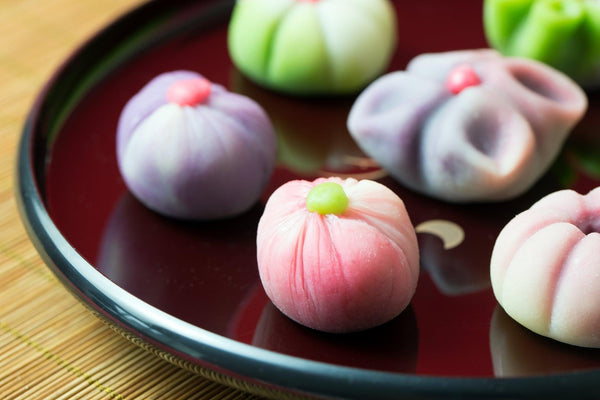
Jump to:
The term Wagashi literally means “Japanese sweets” and is used to distinguish traditional Japanese confectionery from sweets of Western origin, or Yogashi. If you have browsed around the food counters of department stores or specialist sweet shops in Japan, you are sure to have noticed these beautifully presented and richly colored bite-sized sweets.
In this blog post, we shall look at what Wagashi is, its main ingredients, its history and how it is enjoyed in Japan. We shall also discuss the seasonal nature of Wagashi and the various types, giving some well-known examples of each. We shall then round off by recommending some places where you might like to try them.
What Are Wagashi?
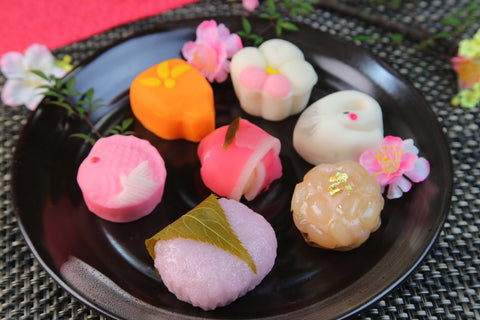
Although the range of confectionery known as Wagashi today has received a few tweaks in modern times, the main types of Wagashi present today had all been developed by the end of the Edo era (1603-1868). Of course, when they were developed they weren’t referred to as Wagashi as the term was only used when Western sweets rolled up on the shores of Japan in the Meiji period (1868-1912) and the “Wa” (meaning “Japanese”) was added to distinguish it from the confectionery favored abroad.
Wagashi are characterized by their bright colors and the care taken in their presentation. They are generally bite-sized, or at least small enough to be consumed in two or three bites at the most. They tend to be lower in fat and calories than their Western counterparts but are fairly high in carbohydrates.
Many foreigners on first tasting Wagashi complain that they are too sweet, but this misses the fact that they are intended to be drunk with green tea, and the bitterness of the tea coupled with the sweetness of the Wagashi creates the kind of yin and yang effect that embodies the Japanese concept of “Wa” or harmony. (See here for more information on Japanese tea.)
Typical Ingredients In Wagashi
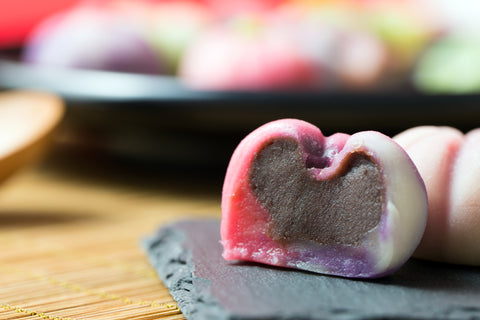
As mentioned previously, there is minimal use of oil and fat in Wagashi. The primary ingredients tend to be grains, such as wheat and rice, starch in the form of red azuki beans and soybeans, and sugar, but Wagashi also contains fruit and agar.
Rice and wheat are the most commonly used grains. Flour made from processed wheat is a commonly used ingredient in Western confectionery as well, but people exploring Wagashi for the first time are often pleasantly surprised about the wide array of uses that Wagashi artisans find for rice in their creations.
When it comes to beans, red azuki beans and soybeans are the most commonly used ingredients, but you can also find daifuku beans, white azuki beans, and even string beans.
Fruits are responsible for some of the beautiful colors and seasonal qualities of Wagashi. Traditionally, persimmons and chestnuts have been indispensable ingredients, and other fruits such as peaches, pears, mandarin oranges, and plums are used, with the Wagashi in question, imitating both their shape and aroma.
Kanten (agar) is an essential ingredient in Yokan, a sweet firm jelly snack. It is made by freezing and drying the juice boiled from seaweeds, such as Amakusa. Kanten is both low in calories and high in dietary fiber.
The History Of Wagashi
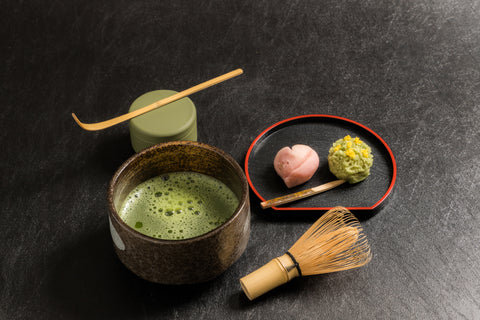
Looking at the history of Wagashi in Japan, it is clear that Buddhism has had an important influence on its development. Several of the main types of Wagashi enjoyed today were originally savory dishes when introduced to Japan from China. Manju refers to steamed or baked small buns made of flour, rice, or kudzu (fermented wheat starch). These were originally filled with pork or mutton, but at the time of their introduction, the influence of Buddhism in Japan meant that Japanese people were prohibited from eating meat, so the pork and mutton were replaced with sweet red azuki beans, which is still by far the most common type of filling today.
There is a similar history behind Yokan mentioned above. This was originally brought to Japan by a Zen monk in the form of Tenjin, a snack made from mutton broth. Again, as Japan was largely vegetarian, red azuki beans were added to the agar to create the Yokan enjoyed as a subtle dessert or afternoon snack to accompany green tea today. Due to its origins, however, the Chinese characters “羊羹” (meaning “sheep broth”) are still used for Yokan.
Between the 7th and 9th centuries, envoys to China brought back sweets from China containing wheat, rice, and red azuki beans. It was not until the 16th Century, however, when missionaries from Spain, Portugal, and the Netherlands brought in the so-called Nanbangashi (literally “Southern barbarian confectionery”), Castella (Portuguese sponge cake), and Kopeito (sugar candy) that the interest in Wagashi started to grow. Around this time, Japan adopted refined sugar, as well as eggs and flour, but as these were imported ingredients, they could only be afforded by the higher classes of society.
Wagashi finally began to penetrate the common classes in the Edo era with the rise in agricultural productivity and the flourishing of commercial activity, which stimulated the development of specialty Wagashi stores. As transportation networks grew, information on regional specialties started to be exchanged. After the introduction of Western confectionery (Yogashi) during the Meiji period, Japanese sweets got the name Wagashi, and increased prevalence in the use of ovens meant that baked goods were added to the repertoire of Wagashi craftsmen.
Seasonal Nature Of Wagashi
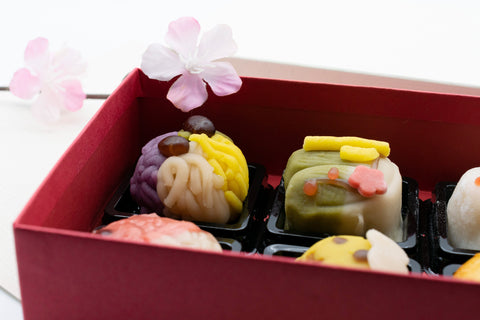
Japan is a country with four distinct seasons. In the world of Wagashi too, the sense of seasons is very important.
There are Wagashi made only for particular seasons. These include Sakuramochi (cherry blossom rice cakes) and Hanami Dango (skewered sweet dumplings made with glutinous rice and the three colors of pink, white, and green to represent cherry blossom flowers) in spring. There is also cool Mizuyokan (sweetened water yokan) in summer, and Hanabira-Mochi, a white rice cake wrapped around a pink rice cake with a center of white anko and a candied kobo root eaten at the first tea ceremony of the year in winter.
The Wagashi themselves are also sometimes used to express the seasons. Nerikiri is a traditional Japanese sweet made with Shiro-an (sweetened white bean paste) and glutinous white flour that is made in different shapes and colors to create the beauty of each of the four seasons.
Classifying Wagashi
There are so many different types of Wagashi that classifying them in simple terms can be quite a labor of love. Commonly, however, they are categorized from a preservation perspective into Namagashi (fresh sweets), Higashi (dried sweets), and Han-namagashi (semi-perishable sweets). Under the Food Sanitation Act, confectioneries containing 30% or more moisture content are categorized as Namagashi, confectioneries with 10% or less moisture content are Higashi, and those with 10-30% moisture content are Han-namagashi. Whereas some types of Wagashi will always be in a certain category (e.g., rice crackers are always Higashi), others such as Manju and Yokan discussed earlier may fall under either Namagashi or Han-namagashi depending on the method of production. Within the above classifications, there are also the following types.
Mushigashi
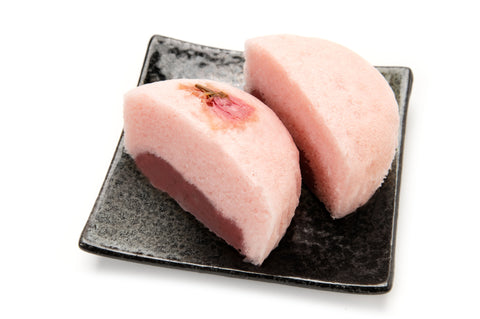
Mushigashi (literally “steamed sweets”) include such favorites as Manju (steamed bean jam buns) and Yuzu-Ukishima, a citrusy flavored sponge cake made with bean paste. Mushigashi is traditionally made by steaming the confectionery in a steamer basket.
Mochigashi
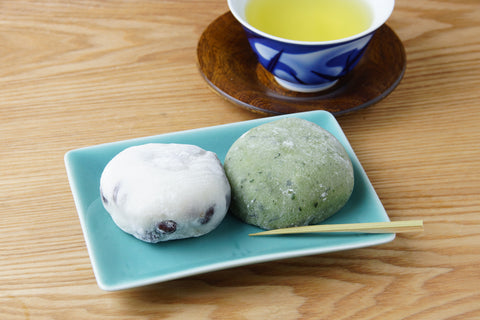
Mochigashi, as the name suggests, is a Wagashi made from mochi rice cakes. Examples of these include Daifuku, which literally means “filled mochi”. The filling is normally anko bean paste made from azuki beans but recently may also contain western-style fillings such as chocolate or custard. Another popular type of Wagashi that uses mochi is Ohagi, which is a sweet mochi in the shape of a ball that is covered with anko bean paste. As already discussed, Sakuramochi is eaten in the spring and is a pink rice cake, to represent cherry blossom, with anko red bean paste in the center, and wrapped in a cherry blossom leaf (see here for more information on the Sakuramochi). Finally, there is also the dango dumpling, which consist of three small mochi balls on a skewer (see here).
Nagashigashi
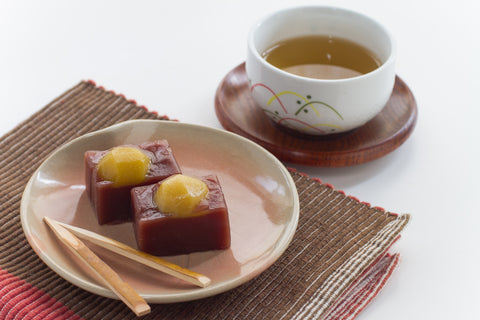
Nagashigashi is a confectionery made by coagulating Kanten agar. After the agar and sugar are mixed well, they are poured into a mold while still hot and allowed to cool. In recent years, due to improvements in technology, Nagashigashi is now made using not only agar but also carrageenan, pectin, and other ingredients. Examples of Nagashigashi include Yokan and Mizuyokan described earlier.
Yakigashi
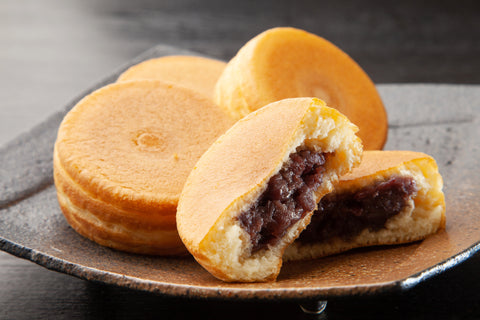
Yakigashi (literally “baked sweets”) covers all Wagashi types baked in an oven. Well-known examples of these are the popular children’s character Doraemon’s favorite food, Dorayaki, which can be described as a honey pancake sandwich filled with anko paste or other fillings. There is also Taiyaki, a cake, commonly sold as street food, shaped like a red sea bream fish and filled with various fillings, again usually anko but also may contain custard or sweet potato.
Nerigashi
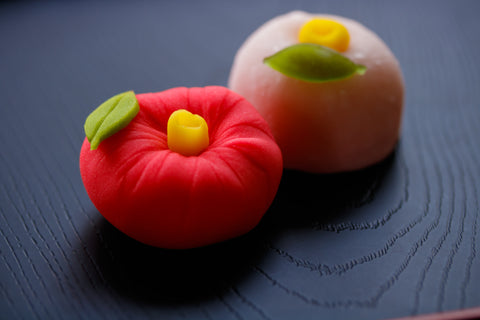
Nerigashi (literally “kneaded sweets”) are often used in the tea ceremony and are made using bean paste and glutinous rice flour. They get the name from the fact that the bean paste is kneaded into shape. An example of this is Nerikiri discussed earlier.
Where To Go To Try Wagashi
Of course, you can find Wagashi in a whole host of local confectionery shops and department stores, but the following are some interesting specialty stores you might like to try.
Kameya Kiyonaga
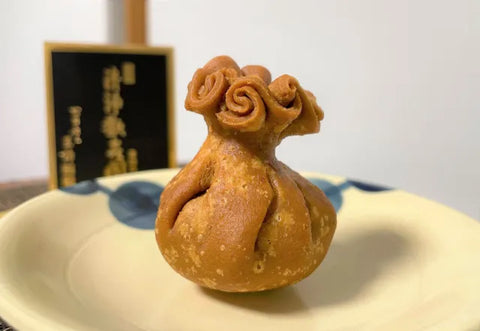
This fascinating 400-year-old Wagashiya in the Gion district of Kyoto has been serving its specialty, the Seijo-Kankidan fried dumpling since its founding. The history of this type of Wagashi goes back to the kara-kudamono, the first type of confectionery to enter Japan in the Nara period.
Chidoriya
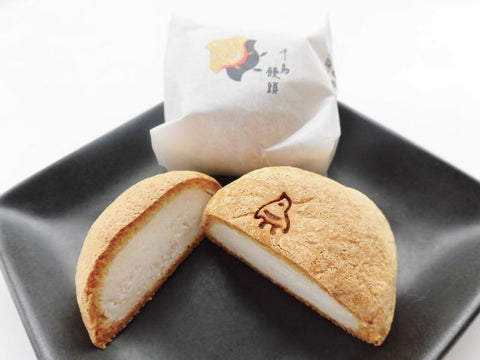
Chidoriya is a Wagashiya, based in Osaka, that has been making various types of Wagashi, such as its flagship Honchidori Manju for over 380 years. In addition to its stores in the Kansai region, it has a thriving online business, which will allow you to enjoy their full range of products from anywhere in Japan.
Ginza Kikunoya
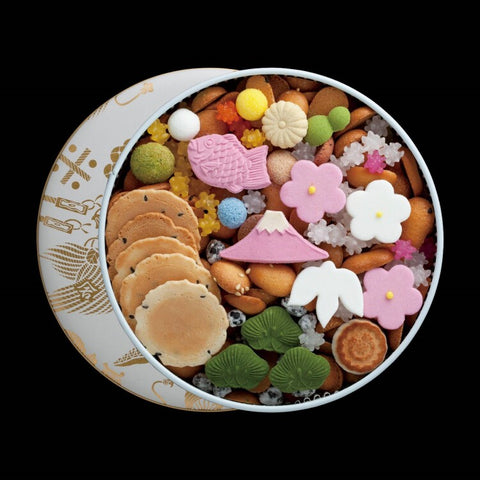
Founded in 1890 in Ginza, Ginza Kikunoya is an Edo-style Wagashiya that cherishes its unique worldview. Their “Fukiyose” set contains more than 30 kinds of Higashi (dried sweets) such as Japanese cookies and konpeito and is the store’s longest-selling product. As this product offers a huge variety of types it is extremely popular with tourists to Japan.
Wagashi-The Aesthetically Pleasing Low Fat Confectionery
When it comes to Wagashi, the presentation is almost as important as the taste, but once lured by its beautiful appearance, you are sure to be able to find Wagashi from the wide range of varieties that suit your palate. If your first reaction is that they taste too sweet, why not try enjoying them with a healthy cup of green tea? As they tend to be lower in fat and calories than Western confectionery, even if you are watching your weight, you can also enjoy them from time to time without blowing your diet.
Which type of Wagashi is your favorite? Do you have a preference for either Japanese or Western-style confectionery? Let us know in the comments.


0 comments